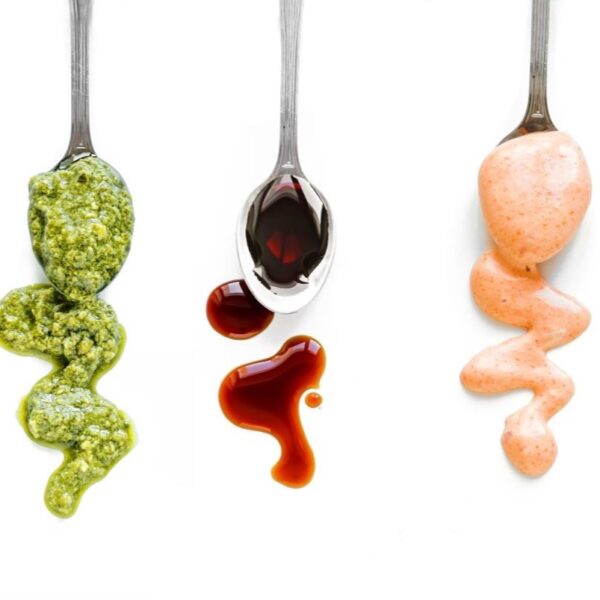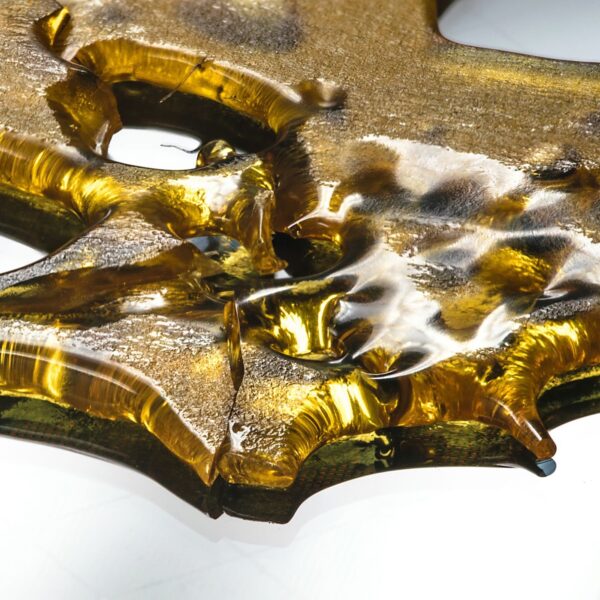Potassium bicarbonate, also known as potassium hydrogen carbonate or carbonic acid, is an alkaline mineral that has found wide-ranging use in the food and nutrition industry. Bakers use it as a substitute for baking soda and powder, and is a common additive to enhance the taste of bottled water. Also, given Potassium is an electrolyte, it has many health benefits and can be found in many dietary supplements. The use of this versatile mineral in food products is a testament to changing consumer needs and health trends. In this article, we’ll explore the chemical properties of potassium bicarbonate, its functions, its use in typical formulations, and its safety and regulatory requirements.
What is Potassium Bicarbonate?
Potassium bicarbonate is a chemical with the chemical formula KHCO3. It is used as a food additive and comes as a white, crystalline powder. One primary use of potassium bicarbonate is as a buffering agent in food and beverages. It is a pH regulator and helps to prevent excessive acidity or alkalinity. Bakers commonly use it as a leavening agent, helping the dough to rise and giving baked goods a light and fluffy texture. As a good source of potassium, it helps those who consume it to meet the daily recommended intake of this mineral.
The chemical formula of potassium bicarbonate indicates that it comprises one potassium ion (K+) and one bicarbonate ion (HCO3-). When potassium bicarbonate is dissolved in water, it dissociates into its constituent ions. In baking, potassium bicarbonate acts as a leavening agent by releasing carbon dioxide gas when it reacts with an acid. The bicarbonate ion (HCO3-) reacts with the acid to form carbon dioxide gas (CO2), water (H2O), and salt.
Source: Wikipedia
How is Potassium Bicarbonate Produced?
Potassium bicarbonate may be prepared by passing carbon dioxide into an aqueous solution of a water-soluble potassium compound, such as potassium carbonate, at conditions effective to produce the bicarbonate [1].
Use of Potassium Bicarbonate in Food and Nutrition
Here are some of the most common functions of potassium bicarbonate in food products:
| Function | Details |
| Leavening agent/ Raising agent | When combined with an acid, such as cream of tartar, it produces carbon dioxide gas, which causes dough or batter to rise.When heated above 80 °C, it decomposes into potassium carbonate (soda ash) and water and liberates carbon dioxide, thus increasing the volume of high-temperature processed goods. |
| Effervescent | Combination with acid liberates carbon dioxide, which creates effervescence in beverages. |
| Acidity regulator | It is a weak base and can act as a buffer, helping to maintain the pH balance in various substances. |
| Antacid | Sodium bicarbonate is also used as an antacid to relieve heartburn and indigestion. It works by neutralizing excess stomach acid. |
Applications in Food and Nutrition
| Type | Examples |
| Bakery | Cake, Bread, Cookies, Tortilla, Pizza, Muffins, Crackers |
| Snacks and Savory | Waffles, Pancakes |
| Soft drinks | Flavored beverages, Effervescent beverage tablets |
| Convenience | Cake premix, Dough mixes, Powdered beverages, Batters, |
| Meat | Processed meat |
| Infant food | Infant formulae |
| Chocolate & Confectionery | Hard-boiled candies, Chocolates, Chewable |
Properties of Potassium Bicarbonate
This compound is characterized by its solubility in water, making it easy to incorporate into various food products. It is non-toxic and stable under various storage conditions, including variations in temperature and humidity.
| Physical Form | Powder, Crystal |
| Color | White |
| Odor | Odorless |
| Shelf Life | Slightly bitter taste |
| Storage Temperature & Conditions | Ambient temperature in a closed container |
| Molecular Weight | 100.115 g/mol |
| pH (0.1 M aqueous solution) | 8.3 |
| Density | 2.17 g/cm3 |
| Melting Point | Decomposes between 100 and 120 °C |
| pKa | 6.37 |
| Solubility | Freely soluble in water (22.4 g/100 mL) |
| Claims (*Product Specific) | Kosher*, Halal*, Vegan |
Typical Formulations
Cookies
Here is an example formulation table:
| Ingredient | Composition (g) |
| Flour | 222.7 |
| Water | 18.3 |
| Sugar | 130.0 |
| Shortening | 64.0 |
| Sodium chloride | 2.1 |
| Dextrose solution | 33.0 |
| Potassium bicarbonate | 1.0% |
Adding potassium bicarbonate improved the elongational viscosity, and dough strength mitigated the stickiness. It also improved cookie texture and positively impacted its coloration.
Source: NIH
Baking Powder
Here is an example formulation table:
| Ingredient | Composition (%) |
| Potassium bicarbonate (35 µ, Coated with 0.5% food-grade soap) | 36 |
| Disodium pyrophosphate | 42 |
| Starch | 22 |
Source: Google Patents
Processed Cheese
Here is an example formulation table:
| Ingredient | Composition (%) |
| Cheese | 90 |
| Potassium bicarbonate | 0.5-1.0 |
| Lemon juice concentrate | 3.0-5.0 |
Source: USPTO
Potassium Bicarbonate Formulation Considerations
| Physical Forms | Powder |
| Stability | Temperature: Decomposes at 110 °C.pH: Stable |
| Sensory Attributes | Odorless white powder with a slightly bitter taste |
| Dosage | 0.5 – 1.5 % or more, depending on the application |
| Interaction with Other Components | Reacts with acids in the food matrix |
Effect on Properties of Food
| Property | Effect |
| Volume | When reacted with acids or via thermal decomposition, potassium bicarbonate liberates carbon dioxide. This aeration causes an increase in the volume of the food matrix. |
| Texture | The aeration caused by potassium bicarbonate makes the food smooth, fluffy, and comparatively lighter. It can also bring about effervescence in liquid formulations. In a study, potassium bicarbonate had significant tenderizing and juiciness effects with improved sensory attributes of the meatloaf [2]. |
| pH | Potassium bicarbonate affects the pH of the food added to it. It is basic and thus causes an increase in the pH. |
| Shelf life | A study reports using potassium bicarbonate to replace sodium tripolyphosphate in silver carp batter. It increased pH and changed the rheology characteristic and protein conformation, providing better gel characteristics and water-holding capacity [3]. |
| Freeze-thaw tolerance | Potassium bicarbonate reportedly helped lock in frozen tilapia fillets’ internal water content and improve their quality during storage [4]. |
Sodium Bicarbonate vs. Potassium Bicarbonate
Sodium bicarbonate is commonly used as baking soda. Meanwhile, potassium bicarbonate is generally a component of baking powder. Both have almost equal strength. The pH of sodium bicarbonate in 1% aqueous solution is 8.5. The pH of potassium bicarbonate is 8.3-8.4 in 0.1 M aqueous solution. Potassium bicarbonate is a sodium-free alternative to sodium bicarbonate for low-sodium food formulations. This makes it a healthier source of potassium, an important nutrient, and electrolyte, for those who are sensitive to sodium.
Safety and Regulatory Considerations
Potassium bicarbonate is regulated by several food safety agencies depending on the region. To ensure safety, formulators should adhere to the following regulations:
| FDA Information | The US FDA regulates the use of potassium bicarbonate as a food additive. It is generally recognized as safe (GRAS) when used per good manufacturing practices. It can also be used as a nutrient supplement [5]. |
| EU Information | In the European Union, the European Food Safety Authority (EFSA) regulates potassium bicarbonate as a food additive. It is assigned an E number (E501) and can be used as a raising agent in various food products. |
Health Effects of Potassium Bicarbonate
When consumed in moderate amounts, potassium bicarbonate can be beneficial. It contributes to the overall dietary intake of potassium. Potassium is essential to maintaining proper heart, muscle, and nerve function. It helps to regulate blood pressure and balance fluids in the body.
- Electrolyte Balance: Potassium is an electrolyte that plays a crucial role in maintaining fluid balance in the body. It helps to regulate the movement of fluids and nutrients in and out of cells.
- Cardiovascular Health: Potassium is known to help regulate blood pressure levels. It helps to counteract the effects of sodium, which can increase blood pressure. A study suggested that increased potassium intake benefits the cardiovascular system [6].
- Bone Health: Potassium bicarbonate may also support bone health. Studies have shown that a diet rich in potassium can help reduce the risk of osteoporosis and improve bone density [7]. Bicarbonate had a favorable effect on bone resorption and calcium excretion, suggesting that the increase in alkali content of the diet may attenuate bone loss in healthy older adults [8]. A study reported that potassium bicarbonate may improve bone health [9].
- Antacid: Potassium bicarbonate can neutralize excess acid in the blood and tissues, which is important for maintaining overall health.
- Exercise Performance: Potassium is involved in muscle contractions and nerve impulses, making it important for athletic performance. Intake of potassium bicarbonate improved the anaerobic performance in athletes [10]. Adequate potassium levels can help prevent muscle cramps and maintain optimal muscle function during exercise.
Safety & Toxicity of Potassium Bicarbonate
Potassium bicarbonate is generally recognized as safe (GRAS) by the U.S. Food and Drug Administration (FDA) when used per good manufacturing practices. It is considered safe for consumption as a food additive and dietary supplement ingredient.
However, it is important to note that excessive intake of potassium can be harmful, especially for individuals with certain medical conditions or taking certain medications.
Identification Numbers
| IUPAC Name | potassium; hydrogen carbonate |
| CAS Number | 298-14-6 |
| EC Number | 206-059-0 |
| INS No. (Food Additive) | INS 501(ii) |
| E Number (Food Additive) | E 501(ii) |
Acceptable Limits or Maximum Usage
The acceptable daily intake (ADI) is proscribed by the WHO as “not limited” [11].
The maximum usage level of Potassium bicarbonate in the food industry per the GSFA is as follows [12].
| Food Category | Max Level |
| Pasteurized cream (plain) | GMP |
| Sterilized and UHT creams, whipping and whipped creams, and reduced fat creams (plain) | GMP |
| Dried whey and whey products, excluding whey cheeses | GMP |
| Frozen battered fish, fish fillets, and fish products, including mollusks, crustaceans, and echinoderms | GMP |
| Infant formulae | 2000 mg/kg |
| Follow-up formulae | GMP |
| Formulae for special medical purposes for infants | 2000 mg/kg |
| Complementary foods for infants and young children | GMP |
Fun Facts About Potassium Bicarbonate
- Potassium bicarbonate is a derivative of potassium carbonate, which was used by ancient artists as far back as 3500 BC for making glass and soap.
- Fire extinguishers include potassium carbonate, a flame retardant that releases carbon dioxide. It was found to be more effective than potassium bicarbonate for this application.
- Potassium bicarbonate is used to decrease acidity in winemaking. This process of deacidification improves the taste and balance of the wine.
- Potassium bicarbonate is an organic, useful fungicide gardeners use to control powdery plant mildew.
- Potassium bicarbonate has been used to control carbon dioxide levels in spacecraft.
Additional Resources
Bibliography
- Google Patents – US3141730A
- Hindawi – Journal of Food Quality Article 2022
- MDPI – Molecules Journal Article
- Wiley Online Library – Food Science & Nutrition Article
- FDA – CFR Title 21, Section 184.1613
- AHA Journals – Hypertension Journal Article
- PubMed Central – PMC Article 6997142
- PubMed Central – PMC Article 2630872
- AHA Journals – Hypertension Journal Article (Duplicate of 6)
- PubMed Central – PMC Article 6266022
- FAO – Monograph on Food Additive 338 (PDF)
- FAO – GSFA Online Additive Details
- IJCMAS – Research Paper by S.K. Jawandha and Kirandeep Kaur (PDF)
- ScienceDirect – Article on Food Chemistry








